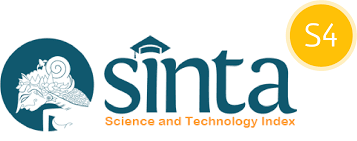Prediksi Tingkat Kesehatan Masyakarat Berdasarkan Penggunaan Alat Kontrasepsi Menggunakan Algoritma Random Forest
DOI:
https://doi.org/10.29408/jit.v7i1.24321Keywords:
Contraception, Public Health, Random ForestAbstract
Public health is part of a lifestyle that is used to prevent disease, extend life span, and improve the quality of human resources. Therefore, it is very necessary to study public health from various aspects, so that the goals and targets to be achieved can be realized. One of the studies presented was the use of contraceptives for rural communities, especially rural communities in Suralaga District, East Lombok Regency - West Nusa Tenggara. The use of contraceptives, which is one of the methods used in implementing family planning, is still at a relatively low level. Based on the data held relating to this matter, analysis and data processing are needed in determining the decisions to be taken to determine the effect of contraceptives in improving public health. Data processing and analysis is carried out using the Random Forest algorithm, which is due to the appropriate characteristics of the datasets used. To get the best results or performance in determining the level of accuracy, the datasets used have 10 attributes, namely: full name, age, last education, couple of childbearing age, age at first pregnancy, age at first birth, ready for birth control, contraceptives, following the contact program, and birth distance. The accuracy obtained was 71.99% with the decision tree output that the most common and efficient contraceptives used in the Suralaga District area were birth control pills and birth control injections.References
Y. Yuliani, Algoritma Random Forest Untuk Prediksi Kelangsungan Hidup Pasien Gagal Jantung Menggunakan Seleksi Fitur Bestfirst, vol. 5, no. 2. 2022. doi: 10.29408/jit.v5i2.5896.
Y. Yahya and H. Bahtiar, “Pengaruh Pertumbuhan Ekonomi Terhadap Tingkat Kesejahteraan Masyarakat Kecamatan Selong Kabupaten Lombok Timur – Nusa Tenggara Barat Menggunakan Algoritma Naive Bayes,” Infotek J. Inform. dan Teknol., vol. 4, no. 1, pp. 20–28, 2021, doi: 10.29408/jit.v4i1.2981.
S. T. Informatika et al., “e-ISSN 2614-8773 92,” vol. 3, no. 2, pp. 92–103, 2020.
A. Lalu Kertawijaya, Rina septiana, “Infotek : Jurnal Informatika dan Teknologi,” Sist. Inf. Berbas. Web Penyewaan Wedd. Organ. Pada Doni Organ., vol. 4, no. 1, pp. 96–104, 2021.
E. T. Susanti and H. L. Sari, “Pendidikan Kesehatan Tentang Jenis-Jenis Alat Kontrasepsi Terhadap Pemilihan Alat Kontrasepsi,” J. Kesehat., vol. 9, no. 1, p. 53, 2020, doi: 10.46815/jkanwvol8.v9i1.95.
D. Irawan, E. B. Perkasa, Y. Yurindra, D. Wahyuningsih, and E. Helmud, “Perbandingan Klassifikasi SMS Berbasis Support Vector Machine, Naive Bayes Classifier, Random Forest dan Bagging Classifier,” J. Sisfokom (Sistem Inf. dan Komputer), vol. 10, no. 3, pp. 432–437, 2021, doi: 10.32736/sisfokom.v10i3.1302.
Baskoro, Sriyanto, and L. S. Rini, “Prediksi Penerima Beasiswa dengan Menggunakan Teknik Data Mining di Universitas Muhammadiyah Pringsewu,” Semin. Nas. Has. Penelit. dan Pengabdi. Masy., pp. 87–94, 2021.
Agustiningrum, C. I., Gata, W., Nurfalah, R., & Radiyah, U. (2020). KOMPARASI ALGORITMA NAIVE BAYES , RANDOM FOREST DAN SVM UNTUK MEMPREDIKSI NIAT. 20(2).
L. Mardiana, D. Kusnandar, and N. Satyahadewi, “Analisis Diskriminan Dengan K Fold Cross Validation Untuk Klasifikasi Kualitas Air Di Kota Pontianak,” Bul. Ilm. Mat. Stat. dan Ter., vol. 11, no. 1, pp. 97–102, 2022.
Imran, B., Subki, A., Yani, A., Alfian, M. R., Engineering, I., Engineering, S., & Mataram, U. T. (2019). DATA MINING USING RANDOM FOREST , NAÏVE BAYES , AND ADABOOST MODELS FOR PREDICTION AND CLASSIFICATION OF BENIGN AND. 37–46
S. Linawati, S. Nurdiani, K. Handayani, and L. Latifah, “Prediksi Prestasi Akademik Mahasiswa Menggunakan Algoritma Random Forest Dan C4.5,” J. Khatulistiwa Inform., vol. 8, no. 1, pp. 47–52, 2020, doi: 10.31294/jki.v8i1.7827.
N. Cahyana and A. Aribowo, Metode Data Mining K-Means Untuk Klasterisasi Data Penanganan Dan Pelayanan Kesehatan Masyarakat, no. 5. 2018.
P. B. N. Setio, D. R. S. Saputro, and Bowo Winarno, “Klasifikasi Dengan Pohon Keputusan Berbasis Algoritme C4.5,” Prism. Pros. Semin. Nas. Mat., vol. 3, pp. 64–71, 2020.
M. Mahpuz, A. Muliawan Nur, and L. M. Samsu, “Penerapan Algoritma C4.5 Dalam Mengklasifikasi Status Gizi Balita Pada Posyandu Desa Dames Damai Kabupaten Lombok Timur,” Infotek J. Inform. dan Teknol., vol. 5, no. 1, pp. 72–81, 2022, doi: 10.29408/jit.v5i1.4414.
Y. Yahya and R. Zuliana, “Prediksi Jumlah Penggunaan BBM Perbulan Menggunakan Algoritma Decition Tree (C4.5) Pada Kantor Dinas Lingkungan Hidup dan Kebersihan Kecamatan Selong Kabupaten Lombok Timur,” Infotek J. Inform. dan Teknol., vol. 1, no. 1, pp. 56–63, 2018, doi: 10.29408/jit.v1i1.895
Downloads
Published
How to Cite
Issue
Section
License
Semua tulisan pada jurnal ini menjadi tanggung jawab penuh penulis. Jurnal Infotek memberikan akses terbuka terhadap siapapun agar informasi dan temuan pada artikel tersebut bermanfaat bagi semua orang. Jurnal Infotek ini dapat diakses dan diunduh secara gratis, tanpa dipungut biaya sesuai dengan lisense creative commons yang digunakan.
Jurnal Infotek is licensed under a Creative Commons Attribution 4.0 International License.
Statistik Pengunjung




